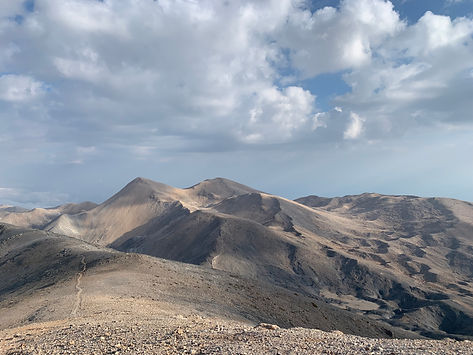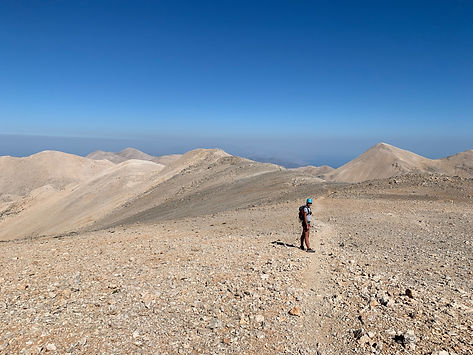the Area

Agios Ioannis
On a mountain plateau extended between Lefka Ori and the South Cretan Sea one finds the almost deserted village of Agios Ioannis. This is where the road ends and a network of foot paths is starting.
It was considered to be one of the most isolated villages in Crete with a year-round population. In 1986 a bridge connecting the sides of the 135 meters deep Gorge of Aradena was built, permitting the road to Agios Ioannis to be constructed!
It came too late, the village was already depopulated.
The eight remaining permanent residents, along with the very few newcomers and the for-the-summers returning villagers, have started giving breath to the old abandoned and falling apart stone built houses.
Scrolling around the village kalderimi (cobblestone alleys) getting to know the place and through the simplicity of the architecture one realises the priorities of the people living on this harsh land.
Each an every acre of land was cultivated with the sheep and goats playing a significant part in local's life, easy to see why.
Houses built of stone with roofs made of wood and mud. An old man once said the aim was to let the least possible rain water through the roof...
White Mountains - Lefka Ori

The White Mountains, or Lefka Ori, is the largest massif on the island and its highest summit is Pahnes (2.453 m). The heart of this imposing range includes the Mountain Desert, where more than fifty peaks named Sori (piles), reminding of cones, exceed the altitude of 2.000 m. Dolines, reminding of upturned cones are formed at the foot of Sori peaks. This creepy and haunting landscape is a unique geological formation in the entire northern hemisphere.
Hiking in the White Mountains requires fitness, experience and a good sense of orientation. There are several mountain shelters where mountaineers can spend their night.
The highest mountain areas are covered by snow till late June. There are numerous caves, precipices, sinkholes and canyons. The most famous gorge is Samaria in the White Mountains National Reserve, but there are many more: to the south, the gorges of Aradena, Tripiti, Klados, Agia Irini, Imbros and Kallikratis, and to the north, the gorge of Vrissi, Therisso, Cyclamen, Boriano, Dittany, Kidoni and more.
The Mountain Dessert

The Mountain Desert is probably the most beautiful and the most mysterious landscape that one can encounter in Greece, a unique phenomenon in the Northern Hemisphere. The Mountain Desert is the area above 2000m altitude in the heart of the White Mountains (Lefka Ori), where dozens of cone-like peaks called Soros (pile) are met. The highest peak of the White Mountains is Pachnes at 2453m.
Almost all soros peaks have almost all 30-degree angles and they look completely bare of vegetation (this gives the name “desert”). However, there are many plant species that have adapted to this eerie environment. At the base of the stacks dolines reminding of inverted cone are formed.
Pachnes Peak 2453

The easiest way for someone to conquer the highest peak of the White Mountains and the second in Crete, Pachnes at an altitude of 2453m, is to follow the dirt road of Madara that starts from Anopolis and enters the Mountain Desert of Sfakia crossing the eerie landscape at Ammoutsera and terminating where the road ends. From there the ascent to the peak Pachnes lasts about 2 hours.
We follow the well marked trail to the Roussies plateau (altitude 2100m). At this point the pathe splitis to two, we take the left to Pachnes whereas the other leads to Katsiveli plateau. Roussies means red and derives from the red color of the limestone soil in contrast to the surrounding areas to the south where everything is gray and black.
From Roussies we follow the path to Pachnes, constantly having amazing views to the eerie alpine desert.
During almost half the year, the mountain desert is covered by snow.
Agios Pavlos - coastal E4
